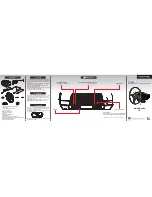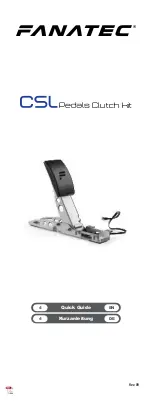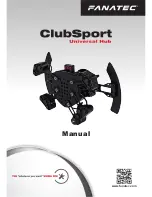
10
The first cut on either the
“A” or “B” series of cuts will be
an open cut. This means you
will be cutting away the edge of
the board adjacent to the fence.
To keep this edge cut clean and
splinterfree, begin with a light
1
⁄
32
"
wide scoring pass, then sneak up
to the first template mark in
several light side-by-side passes.
See Fig. 28.
FIG. 26
Make the “A” cuts
Backing board to
prevent splintering
FIG. 27
Make the “B” cuts
Backing board to
prevent splintering
FIG. 28
Fence
open cut
One of the easiest of the
many interlocking joints that
can be cut with your Incra
Jig, box joints provide a
good introduction to the use of the
Ultra Lite and the joinery templates for joint
making. Just follow these steps to learn how:
Youʼll want to begin by cutting your stock to the lengths
and widths necessary for your box construction. Also
cut a piece of
3
⁄
4
" thick stock to the same width for use in
centering later on.
Install a
3
⁄
8
" straight bit in your router table and set the
depth of cut to slightly greater than the thickness of
your stock.
Center the bit on your stock width and install the
template. Use the centering method described on
page 7 to find the center of your boardʼs width with the
router bit, Fig. 25. Remember, the board used for the test
cuts must be the same width as the pieces you will be
joining later on. After finding the center, slide the BOX1
template into one of the auxiliary scale slots and position the
suggested center cut (9B) directly under the hairline cursor.
Clamp two of your boards to the Right Angle Fixture
with a backing board as shown in Fig. 26. (You can use
your centering board from Step 3 as a backing board if you
like.) The backing board is used to prevent splintering as
the router bit exits the cut. Make cuts at the “A” marks on
the template. Of course, you will only need to make the “A”
cuts that position the boards in line with the router bit. After
completing the cuts, flip the boards end for end and repeat
the same cuts. Now clamp the remaining two boards with a
backing board to the Right Angle Fixture as shown in Fig. 27
and make the “B” series of cuts. Repeat these “B” cuts on
the opposite end of the boards.
Too tight or too loose?
Check the fit of your completed pieces. If the joint is too tight
or too loose, the problem is the router bit, not your Incra Jig.
An oversized bit will create a loose fit, while an undersized bit
will cut a tight joint. To loosen the tight fitting joint, you can
micro adjust the fence backward about five thousandths of an
inch and then re-cut one of the series of cuts.
FIG. 24
Set depth of cut
FIG. 25
Center bit on your stock width
1
2
3
Board to be joined
Depth of cut set slightly
greater than thickness
of stock
See Steps 1-5 starting on page 7
for complete centering instructions
Box Joints
4
Make several
light side-by-side
passes when
making open cut
adjacent to fence
Half Blind Dovetails
The easiest of the dovetail
joints, half blind dovetails add
strength and beauty to your
joinery. They are also the most
versatile of the many joints you
can cut with your Incra Jig. In fact,
many of the decorative joints weʼve
designed over the years are just variations
on the half blind technique you are about to learn. Once
youʼve mastered the steps below, youʼll find these
decorative joints (described in the optional
Incra Master
Reference Guide and Template Library
and in the
Incra Jig
Projects & Techniques
book) quite easy to complete.
Youʼll want to begin by cutting your stock to the
lengths and widths necessary for your box
construction. Also cut a piece of
3
⁄
4
" thick stock to the
same width to use in centering later on.
Install a
1
⁄
2
" 14° dovetail bit in your router table and
set the depth of cut as described on page 6.
The two trial cuts should be spaced
7
⁄
8
" apart for the
DOV1 template.
Center the bit on your stock width and install the
template. Use the centering method described on
page 7 to find the center of your boardʼs width.
Remember, the board used for the test cuts must be
the same width as the pieces you will be joining later on.
After finding the center, slide the DOV1 template into one
of the auxiliary scale slots and position the suggested
center cut (8B) directly under the hairline cursor.
Determine the Pin and Tail cuts. Fig. 31 details the
characteristics of a properly cut pin board and tail
board. Youʼll notice that the tail board always begins and
ends with open cuts, while a pin board will always have
solid stock on its edges. As a result, it is important at this
point to determine which series of cuts (“A” or “B”) will be
used for the tail boards and which series will be used for
the pin boards. To do this, turn to the full sized diagram for
the DOV1 template shown on pages 8-9. With a pencil,
mark the center of the width of one of the boards to be
joined. Align the pencil mark with the center cut mark (8B)
on the drawing, see Fig. 32. On one side of the plans, the
outer edges of the board will overlap grooves. The series
of cuts on that side of the drawing will
become the tail cuts. On the other
side of the plans, the outer edges of
the board will overlap shaded pins on
the drawing. The series of cuts on
that side will become the pin cuts. In
the example shown in Fig. 32, you can
see the edges of the board overlap
grooves on the “A” side of the drawing.
The “A” series of cuts will be used for
the tails. The edges of the board
overlap shaded pins on the “B” side of
the drawing. The “B” series of cuts will
be used to cut the pins.
11
1
2
3
4
FIG. 29
Set depth of cut
See Steps 1-3 starting on page 6 for
complete depth of cut instructions
FIG. 30
Center the bit on your stock width
See Steps 1-5 starting on page 7
for complete centering instructions
FIG. 31
Pins and tails – half blind dovetails
Tail boards are always cut
VERTICALLY clamped to
the Right Angle Fixture
The first and
last cuts on
the tail boards
are always “open
cuts”. This
means the edges
are cut away
Tail boards always
begin with a dovetail
shaped rabbet
Pin boards will always
have half pins (solid
stock) on the outer
edges of the board
Pin boards are cut
FACE DOWN on the
router table
FIG. 32
Determine the pin
and tail cuts
Pins
Tails
Template: DOV1
Approx. Depth of Cut:
1
⁄
4
"
Suggested Center Cut: 8B
Approx. Stock Thickness – Half Blind:
1
⁄
2
" – Through:
1
⁄
4
"
Bit Type:
1
⁄
2
" 14° Dovetail
Spacing to Set Depth of Cut:
7
⁄
8
"
Approx. Rabbet Width:
7
⁄
32
"


































